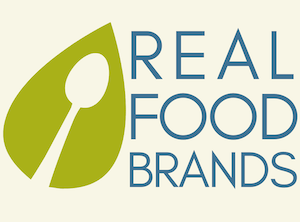A logical place to start wondering about natural foods seems to be “what is the definition of a natural food product?” because there is quite a bit of conversation about what the term natural really means when it comes to the grocery aisle.
While the FDA doesn’t have a clear definition yet, Merriam-Webster defines it this way:
natural food: food that has undergone minimal processing and contains no preservatives or artificial additives
While that sounds like what you might expect, it’s not quite that simple. The FDA began exploring the need for a legal definition of and regulation of for the term natural, including an open comment period which is now closed, but there has not been official guidance as of yet in terms of labeling natural foods.
As the dictionary definition suggests, the term natural often makes consumers assume it references food is not processed, is free from additives, hormones, colors and flavors, etc. that were not in the original food. The fact that this term is unregulated, with the exception of meat and poultry by the USDA, leaves much room for interpretation by consumers who are making an effort to choose what they think are better food choices. And on the flip side, it leaves room for the less scrupulous food companies to take liberties to capitalize on a growing category that does not have clear definition.
Unlike the word natural, products labeled organic do have strict guidelines to follow. To read more about the four distinct labeling categories for organic products – 100% organic, organic, “made with” organic ingredients, and specific organic ingredients — visit the USDA website.
So where does this leave all of us who are trying to buy more natural products but can’t always buy organic? The bottom line is that it’s important to read ingredient lines and research ingredients that are unfamiliar to understand if it fits within the parameters of what you are comfortable with for you and your family. If there is an ingredient or words on the label you are not familiar with, look it up! While we all know you can’t believe everything you read online, there are so many reliable sources of information out there that it’s worth asking the question about the food we eat.
To take your interest one step further into action, when you find ingredients or processes you don’t agree with, give the food company a call or drop them an email. We vote with our wallets every time we shop. However, if we don’t respectfully share our questions, concerns and feedback companies can’t learn from what consumers are looking for. Along that same line, if you are happy to see a clean ingredient line on a product you love, food companies want to hear that too so they can keep up the great work.
 Katie has 15+ years of experience in brand management and marketing across a range of popular brands from Fortune 500 consumer package goods companies to local startups. She has degrees in Marketing & Management from the University of Wisconsin – Madison School of Business and now, as an independent consultant, she is dedicated to helping local and natural food brands become category leaders in both philosophy and growth.
Katie has 15+ years of experience in brand management and marketing across a range of popular brands from Fortune 500 consumer package goods companies to local startups. She has degrees in Marketing & Management from the University of Wisconsin – Madison School of Business and now, as an independent consultant, she is dedicated to helping local and natural food brands become category leaders in both philosophy and growth.


